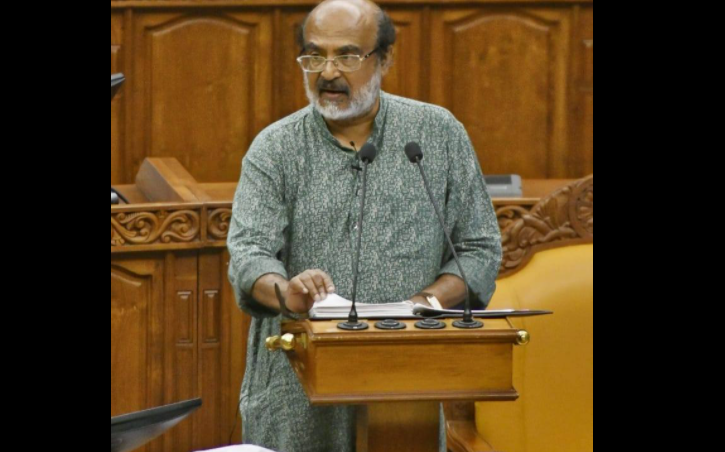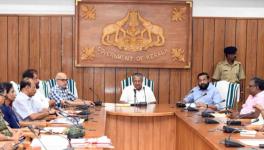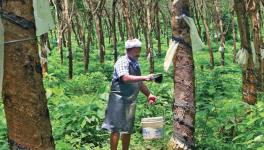Kerala Budget 2021-22: Big Thrust on Job Creation and Social Welfare

In the backdrop of an all-out fight against the COVID-19 pandemic that hit the economy hard, Kerala Finance Minister TM Thomas Isaac on Friday unveiled the Left Democratic Front (LDF) government’s budget for 2021-22 that focuses on social welfare, creation of eight lakh job opportunities and lays out a clear plan for eradication of extreme poverty.
"The Left government ensured that no one sleeps hungry during the time of pandemic. It also instilled confidence in the minds of people," said Isaac, in one of his longest speeches in the Kerala Assembly.
Beginning his speech by listing out various initiatives implemented by the state government to fight the pandemic, the Finance Minister said the budget would be a vision document of development and priorities in post-COVID Kerala.
He said the LDF government, which had fought two consecutive floods and novel coronavirus pandemic effectively, considered each challenge and crisis it confronted as new opportunities.
Unemployment, the Biggest Challenge
Unemployment of the educated is the biggest developmental challenge faced by Kerala. The core of the 2021-22 state budget, therefore, is an action plan for this.
A total of eight lakh employment opportunities will be created in 2021-22. Of this, three lakh employment opportunities will be for the educated and five lakh for others.
“While the national level unemployment in the age group of 15 to 59 was 5.8% in 2018-19, it was 10.4% in Kerala. The main reason attributed is the unemployment of women in Kerala. While the male unemployment rate in Kerala is 5.8%, the female unemployment rate is 19.1%. On realising the difficulties in getting a job, women stop seeking job and go out of the labour force. It is shameful to note that while the labour participation rate of men is 73.5% that of women is only 28.5%,” said Isaac in his budget speech.
Read more: Kerala Budget 2021 Live Updates: Laptops for All, Focus on Tech and Higher Education
Isaac proposed a new Rs 20-crore project to convert buildings with at least 5,000 sq ft into work-stations at the block and municipal level. A new digital platform, through which companies can directly hire job-seekers for ‘work from home’ or work near home models, has been proposed. The government offers incentives to purchase computers and technical devices on affordable loans through KFC, KSFE and Kerala Bank. According to Isaac, at least 20 lakh people would be the beneficiaries of this scheme in the next five years through the digital platform.
“The COVID-19 pandemic has created huge changes in the job structure globally. We should be able to utilise the avenues opened by it,” he said. Globally, almost 50 lakh people were doing digital jobs outside centralised offices. This increased to three crore during the COVID pandemic. It is assumed that their number will go up to 18 crore in the next five years.
Also, over five lakh women professionals have taken a career break, and are staying at home. Another 40 lakh educated women who are outside the labour force and are staying at home, will be willing to work from home or a nearer location. In addition, 16-17 educated youngsters registered with employment exchange are waiting for employment. Hence the total comes to 60 lakh.
So, the plan is to target at least 20 lakh among them through digital platform within five years. Registration for this will be started in February, the finance minister said. The budget also gives special focus on skills training.
Like in previous years, start-ups have got special attention. As many as 2,500 start-ups providing employment to 20,000 people will be started in 2021-22.
A Knowledge Society
The budget also puts forth a vision to transform Kerala into a knowledge society, which envisages skilling the educated and linking them with the global market through the digital platform.
The budget aims to transform the higher education sector into centres of excellence. For that the higher education sector will be expanded to accommodate 3-4 lakh more students; 1,000 more faculty; 30 Centres of Excellence within Universities; and 500 post-doctoral fellowships.
The Nava Kerala post-doctoral fellowships of the Chief Minister will carry a monthly stipend of up to Rs. 1 lakh. Rs.2000 crore financial aid from KIIFB will be given for infrastructure development of universities and Rs.1,000 crore financial aid for affiliated colleges.
Livelihood Jobs
At present, 13-14 lakh people are working under the National Rural Employment Guarantee Scheme in the state. They work 50 to 55 days on average. The total outlay for scheme during 2021-22 is Rs.4,057 crore.
“But we are not intending to restrain the working days within the limit of this amount... During 2021-22, the budget for labour will be arranged with a view to providing work for at least an average of 75 days,” he said.
For urban areas, the previous LDF government had started the Ayyankali Employment Security Scheme, for which an amount of Rs.100 crore has been earmarked.
Also, two lakh employment opportunities in agriculture and allied sector will be promoted under the aegis of farming groups, self-help groups, co-operative societies etc. Three lakh skilled and unskilled job opportunities will also be created in the non-agricultural sector in 2021-22, as per the budget.
Traditional job sectors have also been given special focus, such as coir, craft sector, fisheries etc.
‘Eradication of Absolute Poverty’
Though Kerala is a state where poverty is decreasing at the maximum pace in the country, the LDF government’s mission is to eradicate poverty completely. As a first step, the government will identify four to five lakh ‘absolutely poor’ families and enlist them.
“A priority list will be prepared by conducting a state-level survey based on distress factors among the existing Ashraya beneficiaries and the newly nominated families by local self-government institutions and Kudumbashree. At present, there are 1.5 lakh families as beneficiaries of Ashraya Scheme. It is targeted to cover 4 to 5 lakhs of families as beneficiaries by including all the existing eligible families,” said Isaac.
As per the budget, Rs.6,000 – 7,000 crore will be spent in five years through different schemes for 4-5 lakhs families providing Rs.15 lakh to each family.
‘None Left Out’
Strengthening welfare schemes and pension packages, the social welfare pension was hiked by Rs 100 to Rs 1,600. Honorarium for ASHA workers and elected local body representatives has been hiked by Rs 1,000, welfare fund contribution of non-resident Keralite returnees hiked by Rs 200.
The budget also proposes to create a new social welfare board for employees in the tourism sector. Pension for journalists and non-journalists has been increased by Rs 1,000.
In a relief for farmers, the floor price of rubber was raised to Rs 170 while the procurement price of paddy increased to Rs 28 and coconut to Rs 32.
Get the latest reports & analysis with people's perspective on Protests, movements & deep analytical videos, discussions of the current affairs in your Telegram app. Subscribe to NewsClick's Telegram channel & get Real-Time updates on stories, as they get published on our website.
























